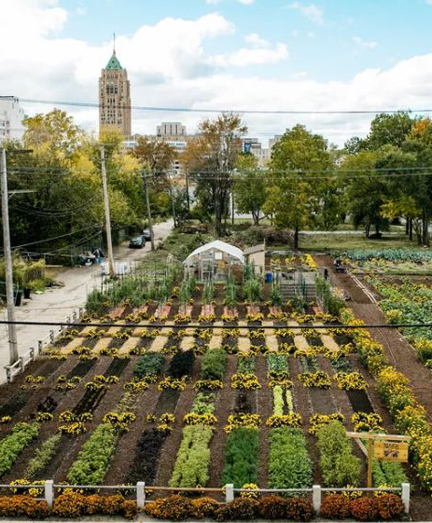
As we look forward to covering new stories on the built and natural environments this year, here’s a look back at the 10 most popular Dirt posts of 2016. Extensive coverage of the Landscape Architecture Foundation (LAF)’s New Landscape Declaration attracted the greatest interest. Thought provoking op-eds on the summit from University of Pennsylvania (UPenn) landscape architecture department chair Richard Weller, ASLA, and UPenn graduate student Billy Flemming, Student ASLA, were also widely read. (Speaking of which, The Dirt is always looking for original op-eds, particularly from member landscape architects, designers, and planners. If interested, please email us at info@asla.org).
Also worth noting: innovative examples of ecological and biophilic design, along with the latest research on the health benefits of nature, drew readers.
1) The New Landscape Declaration: Visions for the Next 50 Years
Over the next 50 years, landscape architects must coordinate their actions globally to fight climate change, help communities adapt to a changing world, bring artful and sustainable parks and open spaces to every community rich or poor, preserve cultural landscape heritage, and sustain all forms of life on Earth. These were the central messages that came out the Landscape Architecture Foundation (LAF)‘s New Landscape Declaration: Summit on Landscape Architecture and the Future in Philadelphia, which was attended by over 700 landscape architects.
2) Has Landscape Architecture Failed?
In 1966, Campbell Miller, Grady Clay, Ian McHarg, Charles Hammond, George Patton, and John Simonds marched to the steps of Independence Hall in Philadelphia and declared that an age of environmental crisis was upon us and that the profession of landscape architecture was key to solving it.
3) 10 Parks That Changed America
PBS will broadcast a new documentary, 10 Parks That Changed America, on April 12th. Produced by WTTW in Chicago and featuring Geoffrey Baer, the show identifies the 10 most influential urban parks in the country, from the era of America’s early settlers to the present day.
4) Biophilic Cities Lead the Way to Urban Sustainability
“We need density but we also need connections to nature,” said University of Virginia professor Timothy Beatley, at an event at the University of the District of Columbia (UDC) to celebrate D.C.’s successful inclusion in the Biophilic Cities Network, a group of leading cities pushing for rich, nature-filled experiences in daily urban life.
5) 15 of the Best Instagram Accounts for Landscape Architects
Instagram is a great way to get inspired, but there are over 500 million active accounts, so who should you follow? For landscape architects, fresh ideas can be found from following other landscape architects, but also those outside the field: artists, technologists, illustrators, and designers.
Social justice. Environmental stewardship. Enduring aesthetic beauty. An expanded role for landscape architects. These were the predominant themes in the Landscape Architecture Foundation (LAF)’s Summit on Landscape Architecture and the Future at the University of Pennsylvania in Philadelphia.
7) Thomas Rainer: There Are No Mulch Circles in the Forest
Instead of laying down a layer of mulch to separate plants, let native plants grow into beautiful, layered masses, said Thomas Rainer, ASLA, co-author of Planting in a Post-Wild World, at the Potomac Chapter of ASLA Gala in Washington, D.C. Rainer believes it’s possible to both boost biodiversity and achieve beauty through the use of “designed plant communities.”
There were so many great books this year that honing in on just ten favorites was too challenging. Whether you are looking for a unique book to give as a gift or one for yourself to delve into, we have some options. Here’s The Dirt‘s top 15 books of 2016, our picks for the best on the environment, cities, and landscape.
9) We Must Better Communicate the Health Benefits of Nature
While landscape architects, arborists, and park advocates, and an increasing number of mayors, planners, and public health officials, understand the presence of nearby nature in cities to be central to human health and well-being, the public seems to think of tree-lined streets, trails, and parks as “nice, but not necessary, add-ons,” according to a new report commissioned by the TKF Foundation and conducted by the FrameWorks Institute, a non-partisan research organization.
10) New Research: Students Learn Better in Classrooms with Views of Trees
What if what is outside a school’s windows is as critical to learning as what’s inside the building? A fascinating new study of high school students in central Illinois found that students with a view of trees were able to recover their ability to pay attention and bounce back from stress more rapidly than those who looked out on a parking lot or had no windows.




























